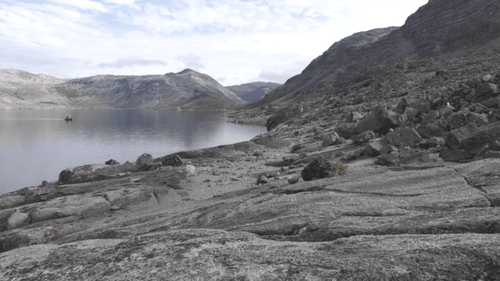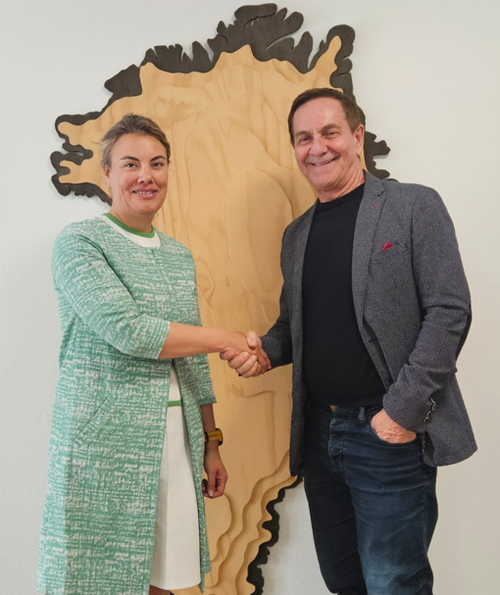Sponsored Content
Could Critical Metals Corp's Tanbreez Project Become Washington's Secret Weapon in the Future for Critical Minerals?

The western world has only just begun to appreciate the magnitude of the risk posed by China’s control of rare earth elements, the central building blocks behind the modern defense industry. Fortunately, there is hope on the horizon, as a new publicly traded company may help to level the playing field, empowering the West to provide China with its most formidable competitor yet.
This past June, Nasdaq-listed Critical Metals Corp. (Nasdaq: CRML), a leading mining development company, embarked on a game-changing move when it announced plans to acquire an interest in the world-class Tanbreez rare earths project in Greenland.
This foundational rare earths project, strategically located in Southern Greenland with access to key transportation outlets, has the potential to turn the tide in the global war for the rare earths market. With an estimated resource of 4.7 billion tonnes containing 28.2 million tonnes of total rare earth oxides, Tanbreez stands as one of the world's largest known rare earth deposits. A notable differentiator for Tanbreez is its sizable concentration of heavy rare earth elements, which constitutes more than 25% of the resource.
Rare Earth Elements are Key to our Defense
Before really delving into the significance of this acquisition, it is important to understand what rare earth elements are and why they are essential for investors to consider.
Rare earths are a group of 17 elements on the periodic table, many of which have names that are difficult for the average person to pronounce. They are divided into two broader categories: Light Rare Earth Elements (LREEs) and Heavy Rare Earth Elements (HREEs), with the latter having limited refining capacity.
For the most part, Light Rare Earth Elements are used in an enormous range of everyday products, such as mobile phones, electric cars, supercomputers, windmills, quantum computing, and they are essential to the clean energy transition. These elements are used to make modern magnets, vital components of electric vehicle motors, medical equipment, wind turbines and data storage systems
But, perhaps most importantly, Heavy Rare Earth Elements are critical materials for the development of national defense applications and heavy weaponry. HREEs are also used in fiber optics, medical equipment and hybrid vehicles.
Key HREEs such as Dy, Tb and Gd are essential components in advanced military defense systems, including the F-35 Lightning II Aircraft, the DDG-51 Aegis Destroyer, and Virginia-class submarines. With the Pentagon planning a substantial increase in F-35 procurement in the coming decades, ensuring a reliable supply of these critical metals will be crucial for national security.
For perspective, a single DDG-51 Aegis Destroyer requires 5,200 lbs. of rare earth elements, and even a F-35 fighter requires more than 500 lbs. of rare earth material.
The Threat of China’s Rare Earth Stranglehold
When it comes to the defense industry, it is alarming how active the Chinese are relative to the western world. The speed of the manufacturing and investment in Chinese defense systems is severely outpacing the of the U.S., with investments in munitions and high-end weapons systems and equipment progressing more than five times faster than in America. A large part of this is enabled by China’s stranglehold on the rare earth market.
Currently, China is the world's dominant producer of rare earths, controlling more than 90% of the market. This level of market dominance allows China to influence great control as it did in 2023 when China put export controls on gallium and germanium, citing concern for their own national security. Both are critical minerals in US industrial and defense manufacturing. What’s even more alarming are the concerns posed by North Korea’s significant untapped rare earth resources. While North Korea is a bit of a ‘black box’ in terms of assessments, many believe that the region has more than six times the amount of rare earths as China. This makes rare earth elements all the more critical of a material.
This is a massive issue that cannot be understated, and it’s only a matter of time before the West wakes up and scrambles to get as many rare earth metals as possible. Critical Metals Corp and the Tanbreez project may be able to help.
Diving into the Tanbreez Project

This highlights the importance and strength of the Tanbreez asset. First and foremost, Tanbreez is massive, containing billions of tonnes of valuable material. The outcropping ore body, known as Kakortokite, spans an impressive 8 by 5 kilometers and boasts a thickness of approximately 400 meters. The production rate is expected to start at 500,000 metric tons per year, eventually increasing to 3 million metric tons per year, supporting an extraordinary mine life.
Significant progress has already been made to tap this valuable asset. Tanbreez was awarded a key exploitation license 4 years ago, extensive studies have been completed, and Critical Metals Corp is close to underway with a SK1300. A total of 414 drill holes and more than 366,000 assays have been conducted, providing a rich database on the deposit's geology, geochemistry and rare earth element distribution. Substantial bulk testing, totaling approximately 709 tonnes, further demonstrates the asset's key significant scale and underscores the depth of the work already completed.
One of the key advantages of the Tanbreez Project is its prime location in Southern Greenland, which offers year-round direct shipping access via deep water fjords connected to the North Atlantic Ocean. The region also benefits from the mildest weather conditions in Greenland, with average temperatures ranging from 0 to 5 degrees Celsius in the winter and 10 to 15 degrees Celsius in the summer. These factors significantly enhance the project's feasibility and economic viability. Moreover, the Tanbreez resource is an open pit that can be mined with minimal waste(approximately 3%), and with minimal need for chemicals.
Greenland is strategically important to both Europe and the US as seaborne trade from the island nation with a population of 58,000 people is easily defended by America’s dominant naval presence in the Atlantic. Material can be protected during transportation – even in the event of war - to both the US and Europe for processing. Tanbreez’s size and uniquely defensible geography have garnered the attention of key national security departments and agencies in both the America and Europe. They understand the strategic importance of this deposit and its singular ability to solve the vice grip that China holds over the rare earth metals market.
CRML Is Not Just Rare Earths Company, But Also a Lithium Play
As exciting as the Tanbreez project is, it isn’t even Critical Metals Corp’s flagship project. That distinction belongs to the Wolfsberg Lithium Project in Austria. With Tanbreez and Wolfsberg in its expanding multi-geography portfolio, Critical Metals is strategically focused on two of the most in-demand resources of the 21st century: rare earth elements and lithium – widely regarded as the metals of the future. Europe's first fully-permitted lithium mine, the Wolfsberg project is strategically located to serve the continent's burgeoning lithium-ion battery market. With a resource of 12.88 million tonnes at 1% Li2O grade and a mine life exceeding 15 years, Wolfsberg is set to play a crucial role in Europe's electric vehicle supply chain. To put this in perspective, the project could produce enough material to power more than 5 million average electric vehicles, assuming an average of 63 kg of lithium carbonate equivalent (LCE) per EV battery.
Further underscoring the project’s viability, Critical Metals Corp has a binding offtake agreement with BMW Group, and recently received a $15 million pre-payment from the automaker.
This July, the company announced its acceptance of assignment of the European Lithium-Obeikan Group Investment Company (Obeikan Group) joint venture. The 50%/50% JV will be focused on developing, constructing and commissioning a large-scale lithium hydroxide processing plant in Saudi Arabia, and operating the plant for the conversion of lithium spodumene concentrate from the Wolfsberg Lithium Project in Austria.
The Fundamental Market Opportunities are Robust
For comparables, I would encourage you to check out MP Materials (NYSE:MP), a $2.2 billion market cap issuer with a known resource of just under 3 million tonnes that is almost entirely light rare earth elements (LREE) for comparison. On the lithium side, Sigma Lithium Corp (Nasdaq: SGML) serves as a great comparable.
This all boils down to robust market opportunities. The market for both rare earths and lithium is robust and growing. The global rare earths market is projected to nearly double from $5.3 billion in 2021 to $9.6 billion by 2026, driven by demand for magnets in electric vehicles and wind turbines, but most of all, defense industry applications. Similarly, lithium demand is expected to quadruple by 2030. While lithium prices have experienced recent declines, a significant shortfall in the supply of lithium spodumene product and battery-grade lithium hydroxide is expected by 2026 or 2027, coinciding with when the Wolfsberg project is expected to be in production.
As the world races to secure supplies of rare earths and lithium, Critical Metals Corp is strategically positioned to play a pivotal role in reshaping global supply chains and bolstering national security. The key to success with future metals projects lies in an experienced management team, the fundamental strength of the assets in question, location, permitting, and offtake partners – all of which are present within the Critical Metals Corp story. They will be essential players in securing the essential elements use to build the products of the future and, more importantly, the national security we so desperately need.

